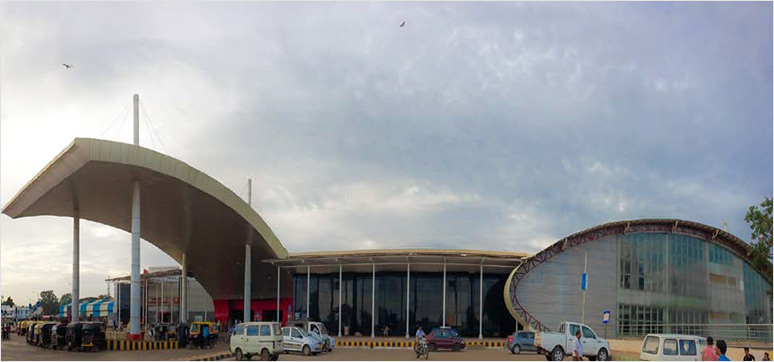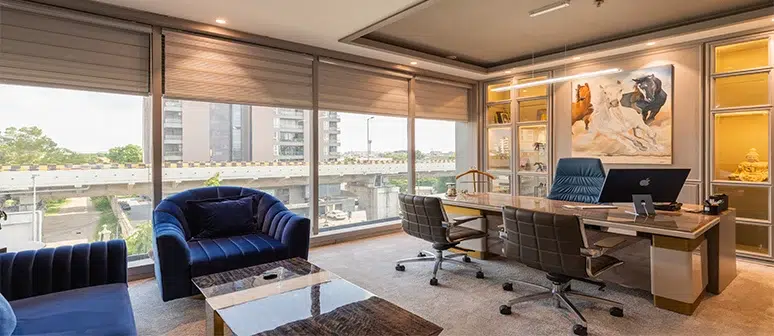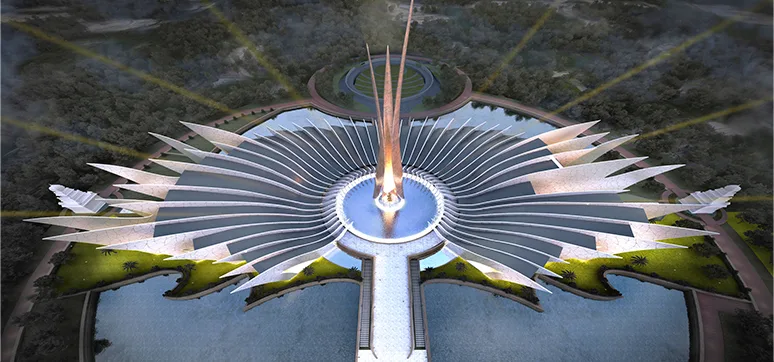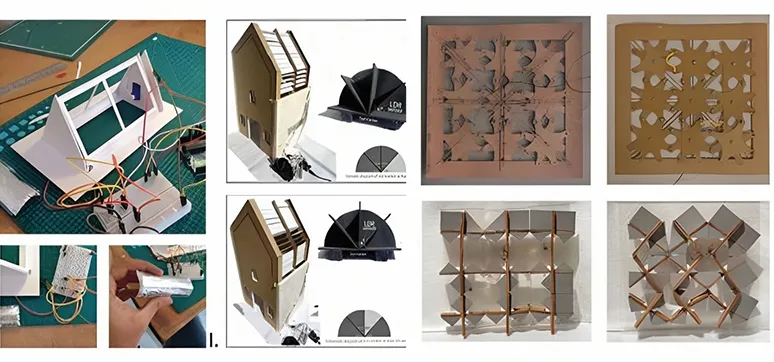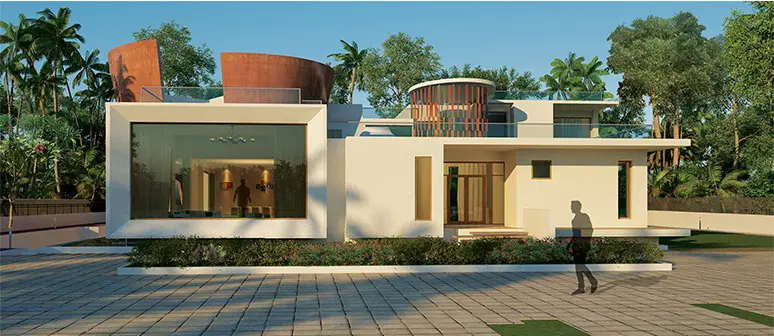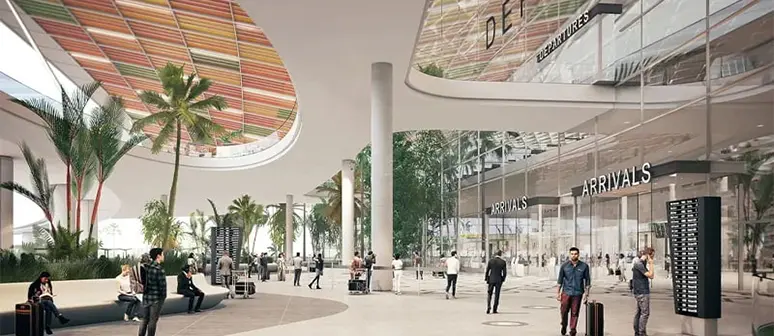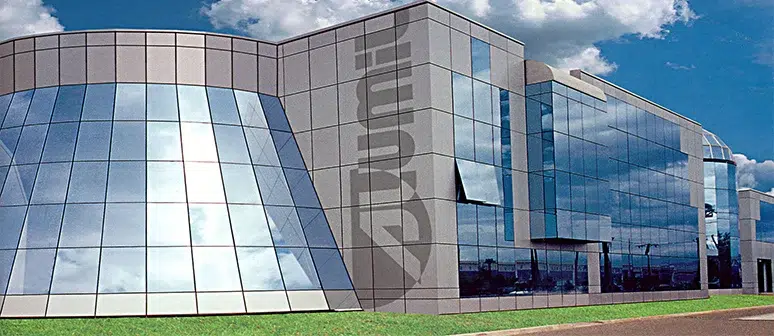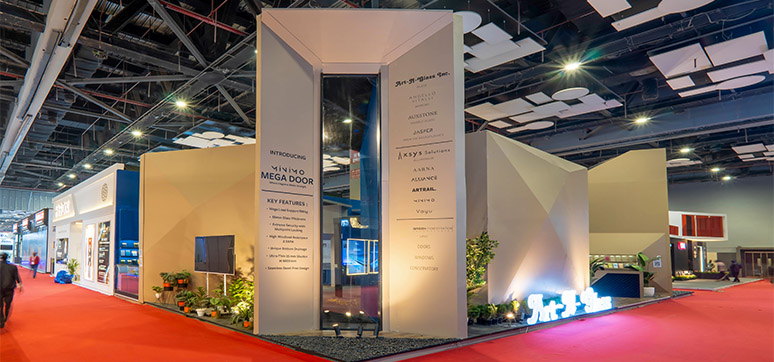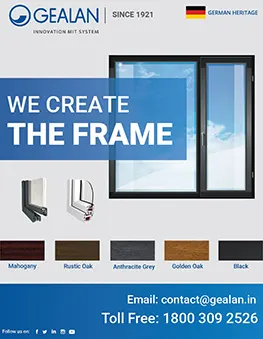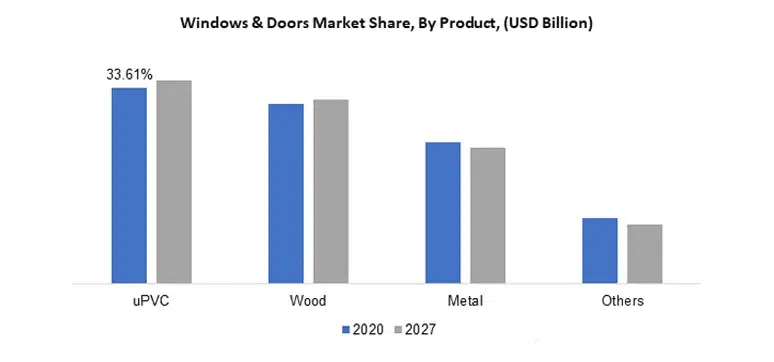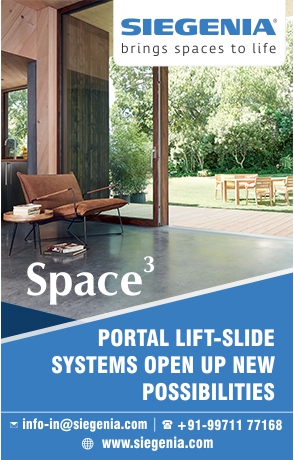A Modern Public Facility New Railway Station Building, Hubli
By: Nalini Kembhavi,
HUBLI, officially known as HUBALLI, literally meaning “Flower creeper”, is located on NH4 connecting Mumbai to Bangalore. Hubli Railway enjoys the status of zonal headquarters of south western railway of Indian Railways. This railway junction is connected to Mumbai in North-West, Goa in West, Bangalore in the South, Hyderabad and Solapur in North. It meanders through the rich forests of Western Ghats, the mining belts of Bellary, Hospette, traverses through archaeologically important heritage sites of Bijapur, Hampi, Badami, Pattadkal, Mysore etc., carrying commercial produce, manganese ore, timber sheet etc. thus making it one of the busiest and important junction.
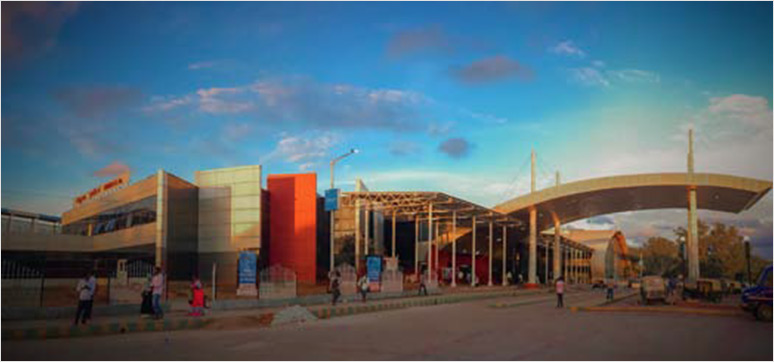 New Station Building, Hubli
New Station Building, Hubli
Hubli, being strategically located geographically on the Deccan plateau, was a part of political upheavals from the Vijayanagar dynasty through Adilshahis, Mughals, Peshwas and finally the British. The first railway workshop was established in AD 1880 and a station was built in AD 1881. After a span of 131 years, there was a need of a new modern railway station felt, which led to the conceptualization of a new railway station.
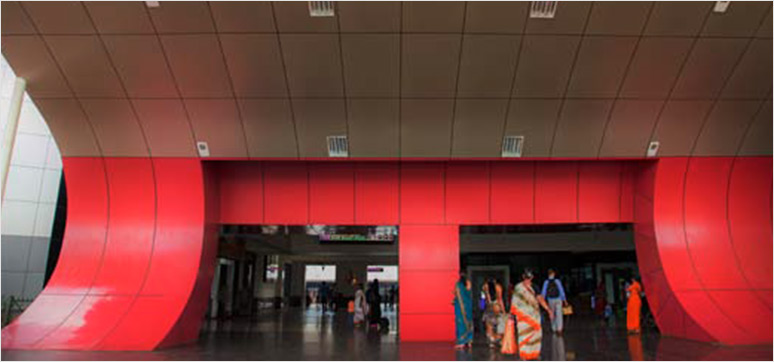 The Entrance to the Station
The Entrance to the Station
Circulating Area: Easy entry and exit areas for arriving and departing passengers were planned by segregating arrival and departure concourses at different levels. Circulating areas and entrances catered for easy drop and pick up points for passengers arriving/departing by different modes of transport viz. 2, 3 and 4 wheelers, private vehicles, and public transport system. A parking facility was planned considering the hierarchy of vehicles totalling approximately 5000, apart from the local bus transport, and prepaid pay & use auto service. Adequate toilet facilities were arranged for, including handicap-friendly toilets.
Main Building: The main building consists of three blocks – Blocks A, B and C. All the three blocks were conceptualized in such a way that the structure is developed into three separate buildings, each performing different functions. All these three blocks are connected by a wide corridor on the land side, which can take the self operated trolley parking & passenger traffic.
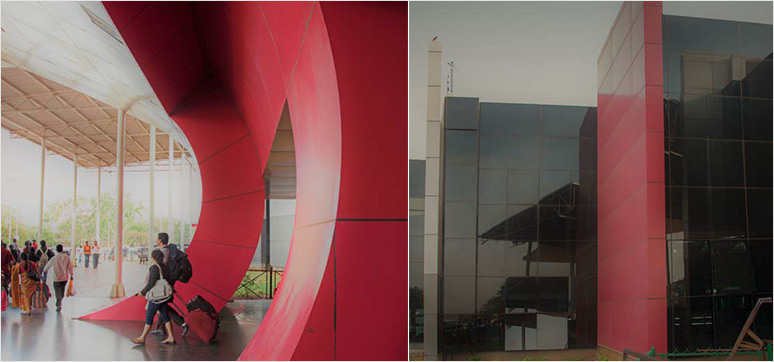 Circulating areas and entrances catered for easy drop and pick up point for passengers & The use of sun control glazing in structural glazing and aluminium windows helps to cut down glare
Circulating areas and entrances catered for easy drop and pick up point for passengers & The use of sun control glazing in structural glazing and aluminium windows helps to cut down glare
Block A takes care of the connecting subway to the concourse level, the station chief officer cloak room, ramps, escalators and supermarket at the lower and a mall at upper levels.
Block B contained booking offices, admin offices, VIP lounge and large waiting lounge , help desks at lower level and railway retiring rooms, dormitories for IT’s , inspection officers etc., at a higher level.
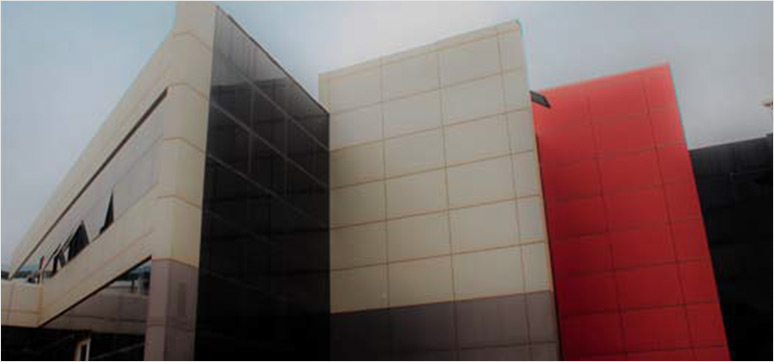 Use of aluminium composite panel makes the façade easy to maintain.
Use of aluminium composite panel makes the façade easy to maintain.
Block C takes care of passenger amenities viz. food plaza, passenger retiring rooms, cyber café, tourist information lounge, and waiting halls for ladies & gents.
It was observed that due to the distance from the main road and difference between the levels of the site and the road (main road being at a lower level than track level), the visual axis of the station building was lost from the main road. The height difference also resulted in a porch which soars to a height of 12m, making it the focus of the station.
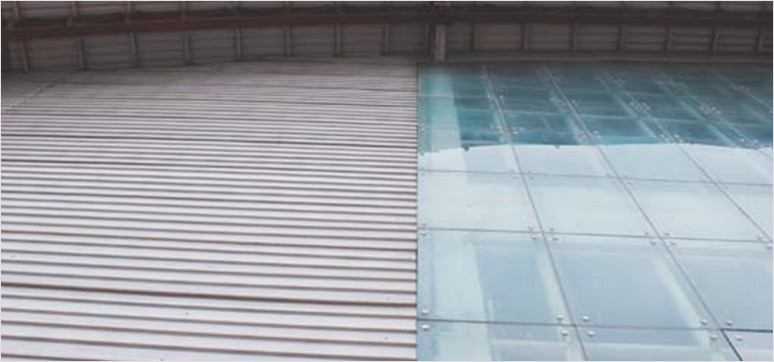 Structural glazing and spider glazing has been used to maximize the daylight factor
Structural glazing and spider glazing has been used to maximize the daylight factor
Façade Design
Except Block C which has been designed as per RCC structure for vertical expansion, all the other blocks have been designed to cater to the requirement of unobstructed movement through large spans. Combinations of natural and man-made materials were used for creation of an energy-efficient space, which is functionally effective and aesthetically pleasing. Another emphasis was on using products which do not require a lot of maintenance as it is a public building.
Use of granite flooring helps to naturally cool the common areas. It is an easily available local material which also takes well to the wear and tear of heavy foot traffic.
The structure has tubular trusses with znalu puff sheet roofing to reduce the impact of heat and sound. It provides efficient thermal insulation and thus helps in saving power consumption costs. The use of Galvalume roofing provides soundproofing and helps to reduce internal building temperature. It is long-lasting and does not require constant maintenance.
Most of the areas are left open for easy air movement to reduce the noise level. Station Building façade faces south west, hence a large deep connecting corridor was designed in front of the building, which gives ample shade for the user.

Large skylight in block A illuminates the central atrium consisting of ramp, escalator to subway level. Structural glazing and spider glazing has been used to maximize the daylight factor. The use of aluminium composite panels makes the remaining façade easy to maintain. ACP, a recyclable product, is a product manufactured in the same region; hence it saves the transport costs incurred and reduces the impact on the environment. It reflects the sun rays hitting its surface and hence reduces the temperature inside the station building and saves the power spent on air conditioning. The colour red in ACP is used to add accent to the elevation which otherwise has all neutral colours.
 Elevation drawing of the structure
Elevation drawing of the structure
The use of sun control glazing in structural glazing and aluminium windows helps to cut down the glare and at the same time keeps the heat of the sun out of the building to a certain extent. It, however, does not cut out sunlight and hence provides ample natural lighting within the building. The glazing and claddings are very pleasing aesthetically and do not compromise functionality. The major effort was to fit into the restrictive schedule of public works and yet give a modern façade.
QUICK FACTS
Project: New Station Building at Hubli
Location: Hubli, Dharwad District, Karnataka
Client: South Western Railway
Architect: M/s Kembhavi Architecture Foundation
Commencement Date: November 2008
Site Area: 16.843 Acres
Completion Date: 2016
Top Stories
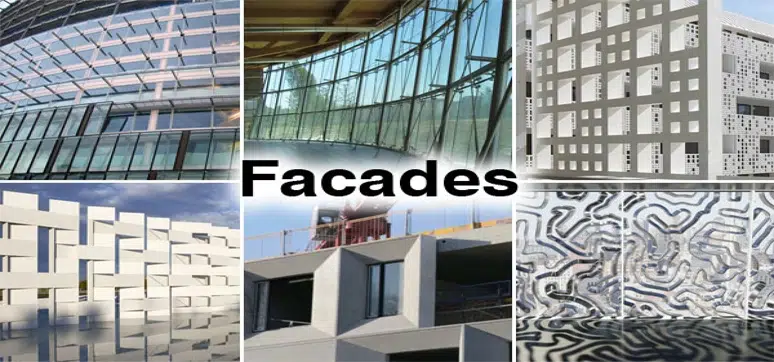
Façade Systems Market Size is Estimated to Reach USD 398.8 Billion by 2029
By: Abdul | April 16, 2024
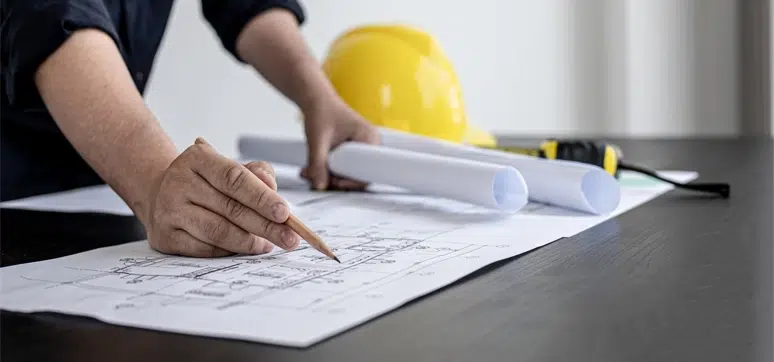
Improving Sustainability Alongside Fire Safety – Can We Deliver?
By: Abdul | April 16, 2024
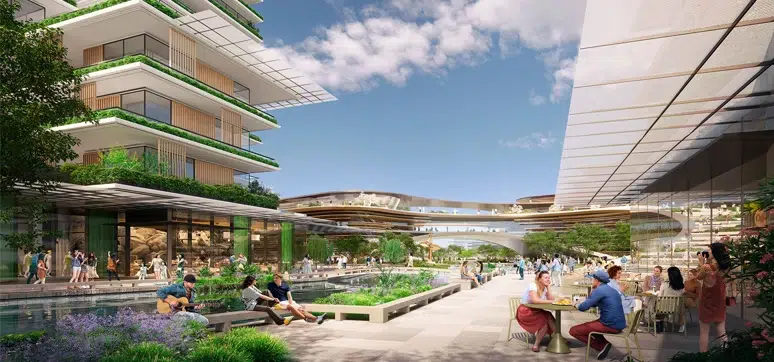
Foster + Partners Wins the Competition the New Xicen Science & Technology Centre
By: Abdul | April 9, 2024
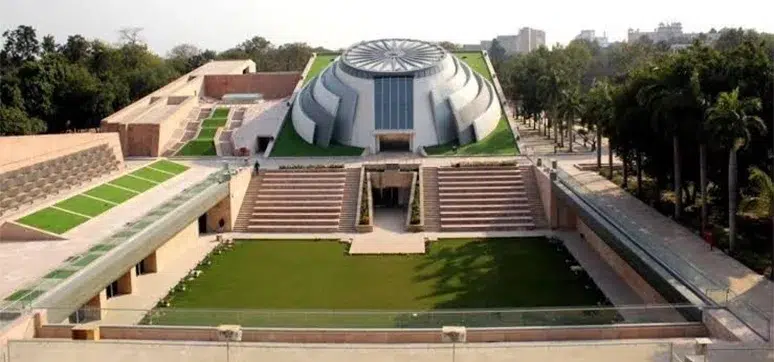
A Symbol of Architectural Brilliance & Cultural Significance
By: Abdul | April 8, 2024

